If you recently got a tattoo, the last thing you expect to see is yellow bruising around your new design. While this is not common, it can happen and if it does, it’s important to know the steps to take in order to address the issue. In this blog article, we will delve into the potential reasons behind the appearance of yellow bruising around tattoos and emphasize the critical importance of promptly seeking medical attention when observing any unusual alterations, such as discoloration. Knowing how to properly care for newly inked skin will ensure that your artwork looks amazing for years down the road!
Understanding Yellow Bruising
Yellow bruising around a new tattoo, also known as a hematoma, is a sign that your body is reacting to some form of trauma. It’s important to know that tattoos by their very nature cause a controlled injury to the skin, and bruising is a natural part of the body’s healing process. The yellow color is indicative of an older bruise, a sign that your body is healing and the bruise is in the final stages of recovery. [1] Typically, this shouldn’t be alarming as it’s part of the body’s response to healing the tattooed area.
However, it’s crucial to be vigilant for other signs of complications. If the yellow bruising is accompanied by severe pain, swelling, warmth, or red streaks stemming from the tattooed area, or if you develop a fever, these could be signs of an infection. Similarly, if the bruising doesn’t fade or worsen over time, it’s crucial to contact a medical professional to rule out other potential issues, such as an allergic reaction to the ink, a skin infection, or a blood clot.
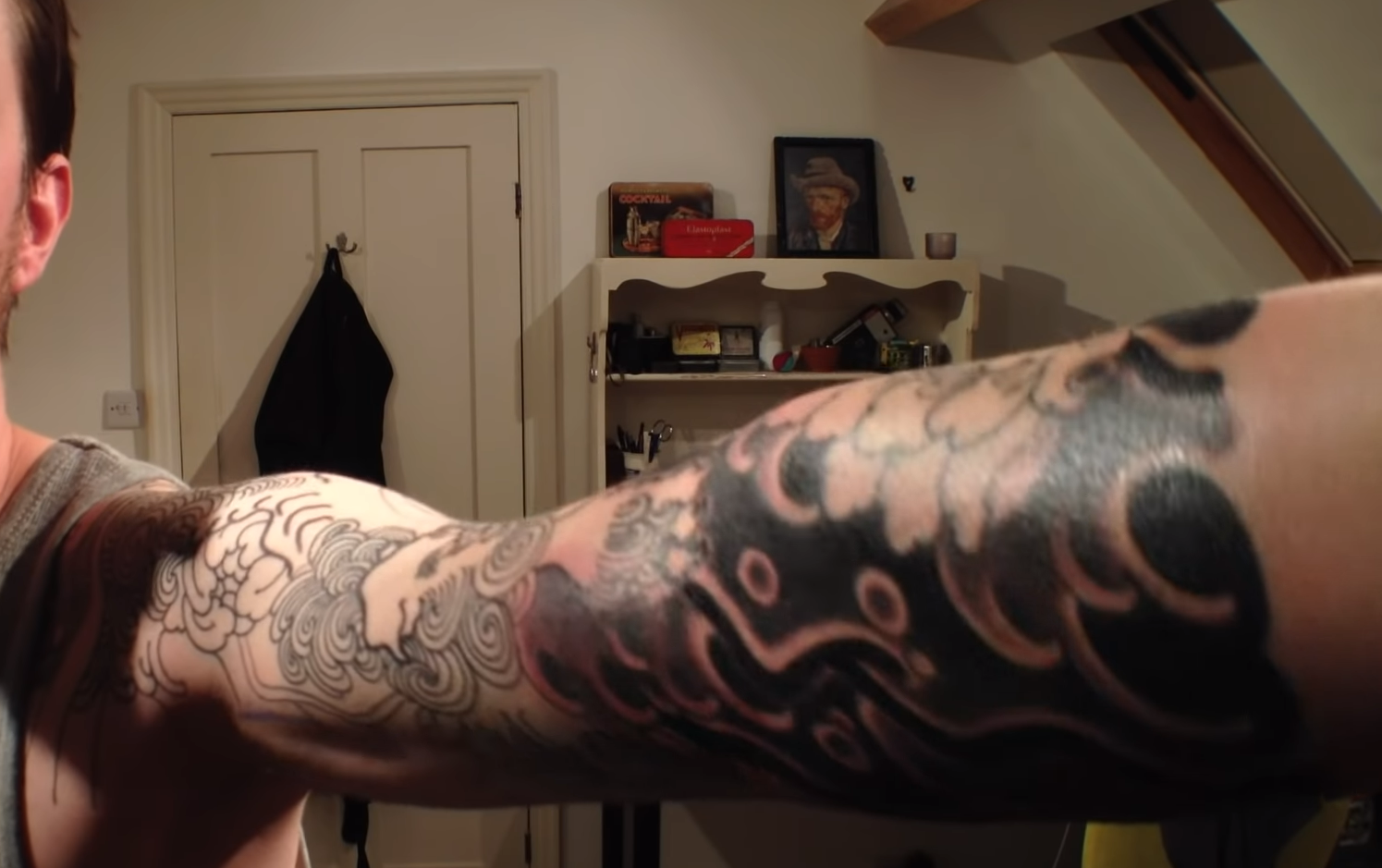
Causes of Yellow Bruising
- Natural Healing Process: As previously mentioned, the yellow coloration is indicative of a bruise in its final stages of healing. This is a natural part of the body’s response to the controlled injury caused by tattooing.
- Pressure and Trauma: The tattoo process involves the repeated insertion of a needle into the skin. This can occasionally lead to the formation of a hematoma when it ruptures small blood vessels beneath the skin, leading to localized bleeding underneath the skin and subsequent bruising.
- Allergic Reaction to Tattoo Ink: Some people may be allergic to certain types of tattoo ink, especially colored ones. [2] The body may react to these substances, causing inflammation and bruising around the tattooed area.
- Skin Infections: If the tattoo site isn’t properly cleaned before or after the procedure, bacteria can enter the wound and cause an infection, which can lead to bruising.
- Improper Aftercare: Not taking proper care of the tattoo after the procedure can also lead to complications such as bruising. This includes not cleaning the area properly, not applying the recommended ointment, exposing the tattoo to sunlight, or soaking it in water.
- Pre-existing Conditions: Some health conditions, including blood clotting disorders and diabetes, have the capacity to influence the body’s healing mechanisms, potentially resulting in extended or heightened bruising.
Differentiating Yellow Bruising from Normal Healing
The process of tattoo healing generally advances through specific stages, and being able to identify these stages can assist in distinguishing between regular healing and the occurrence of yellow bruising. Initially, a new tattoo may look shiny and be accompanied by some redness and swelling. This is a normal response to the trauma inflicted on the skin during the tattooing process. As the healing progresses, the tattoo may start to itch and peel, much like a sunburn.
On the other hand, yellow bruising is quite distinct. As your body heals the bruise, it changes color from black-blue to purple to green and finally to yellow, indicating the reabsorption of blood products from the bruised area. It’s important to note that the entire healing process can take up to 2-3 weeks.
When to Be Concerned
While yellow bruising around a new tattoo is usually a part of the normal healing process, there are a few instances that warrant immediate concern. If the bruising persists for over a week without showing signs of fading, it may be a sign of a more serious issue. [3] Additionally, if the bruising is accompanied by other symptoms such as severe pain, swelling, warmth, or red streaks stemming from the tattooed area, or a fever, it’s important to seek medical attention immediately as these may be signs of an infection.
An allergic reaction to the tattoo ink can also cause prolonged bruising, along with other symptoms such as itching, rash, and blisters. Finally, individuals with pre-existing medical conditions like blood clotting disorders or diabetes may experience prolonged or heightened bruising. In such situations, it is advisable to promptly seek guidance from a healthcare professional to prevent potential complications. Proper aftercare and observation are key to ensuring your tattoo heals properly and remains as vibrant and beautiful as the day you got it.
What to Do About Yellow Bruising Around Tattoo
If you notice yellow bruising around your new tattoo, here are several steps you can take:
- Monitor the Bruising: Keep a close eye on the bruising. Note any changes in size, shape, or color. If the bruising starts to fade and change color over time, this is a sign of the body’s natural healing process at work.
- Consult a Medical Professional: Should the bruising persist beyond a three-week period, be accompanied by additional symptoms like redness, inflammation, or severe pain, or if you possess a pre-existing condition that might impact the healing process, it is highly advisable to seek immediate medical consultation.
- Follow Proper Aftercare Techniques: Clean the tattooed area gently with mild soap and warm water, pat it dry, and apply an approved moisturizing ointment. Avoid exposure to direct sunlight and refrain from soaking the area in water. These steps can help promote healing and prevent further bruising.
- Maintain a Healthy Lifestyle: Good nutrition, adequate hydration, and plenty of sleep can help your body recover more efficiently. Avoid heavy alcohol consumption and smoking, as both can impair your body’s healing process.
- Avoid Disturbing the Tattoo: Resist the urge to scratch or pick at your tattoo. Disturbing the area could lead to further bruising or even scarring.
- Contact Your Tattoo Artist: Reach out to your tattoo artist if you have any concerns. They have extensive experience in the healing process of tattoos and can provide advice or reassure you about normal healing versus potential complications.
Long-Term Care and Management
Even after your tattoo has fully healed, maintenance and care shouldn’t stop. A tattoo is a lifelong commitment, and its vibrancy, clarity, and overall appearance can be maintained through continued observation of the following practices:
- Moisturize Regularly: Continued moisturization helps maintain skin elasticity and keeps your tattoo looking vibrant. Use a skin moisturizer that doesn’t contain alcohol, as it can dry out the skin and cause your tattoo to fade over time.
- Sun Protection: Exposure to UV rays can cause significant damage to your tattoo, leading to premature fading and distortion. Always apply a high-SPF sunscreen to your tattoo before prolonged exposure to the sun.
- Avoid Soaking: Submerging your tattoo for extended periods can lead to fading. Avoid long baths and limit your time in swimming pools.
- Monitor Changes: It’s important to keep an eye on your tattoo for any significant changes, such as excessive dryness, itching, or changes in color. These could be signs of a skin condition that may require medical attention.
- Maintain a Healthy Lifestyle: Your skin’s health directly affects the appearance of your tattoo. A well-balanced diet, adequate hydration, regular exercise, and sufficient sleep can help keep your skin in good condition, which, in turn, maintains the quality of your tattoo.
- Periodic Touch-ups: Over time, your tattoo may start to fade or lose sharpness. A touch-up session with a professional tattoo artist can rejuvenate old tattoos and restore their original vibrancy.
Avoiding Irritants
It’s equally crucial to be mindful of the substances and circumstances that could irritate your tattoo and potentially affect its appearance. Here, we provide a comprehensive guide to avoiding irritants:
- Avoid Harsh Chemicals: Certain soaps, lotions, and cleaning products contain harsh chemicals that can irritate the skin and negatively impact your tattoo. Choose mild, fragrance-free soaps and lotions for daily use.
- Limit Exposure to Chlorine: Prolonged exposure to chlorine, as found in swimming pools and hot tubs, can cause your tattoo to fade. If exposure can’t be avoided, ensure you thoroughly rinse the tattooed area with fresh water afterward.
- Avoid Tight Clothing: Wearing tight or abrasive clothing over your tattoo can cause irritation and hinder the healing process. Opt for loose, breathable fabrics whenever possible.
- Beware of Allergens: Allergens like dust, pollen, or certain foods may cause skin reactions that can affect your tattoo. If you notice consistent irritation, it might be worth getting an allergy test to identify potential triggers.
- Refrain from Excessive Physical Activity: Heavy sweating can potentially irritate your fresh tattoo. Limit strenuous exercises until your tattoo is fully healed.
- Avoid Excessive Sunlight: As already mentioned, UV rays can cause your tattoo to fade prematurely. Wear a high-SPF sunscreen or cover your tattoo when exposed to the sun for prolonged periods.
- Avoid Scratching: Itchiness is common during the healing process, but scratching can cause severe damage. If your tattoo is itchy, try gently tapping it or applying a mild, fragrance-free moisturizer.
Seeking Professional Help
While most tattoo-related concerns can be mitigated with proper care and precaution, there are times when professional help should be sought.
- Infection Signs: If you see severe redness, swelling, or pus drainage from your tattoo, it could be a sign of an infection. Fever and chills accompanying local symptoms also indicate a systemic infection. In such cases, medical intervention is crucial.
- Allergic Reactions: Rashes, hives, or excessive itchiness around your tattoo may indicate an allergic reaction to the tattoo ink. These can occur immediately after getting the tattoo or years later and should be evaluated by a healthcare professional.
- Persistent Pain: While some degree of pain is normal after getting a tattoo, persistent or increasing pain could suggest a problem that needs medical attention.
- Unusual Scarring: If you notice raised or thickened skin around your tattoo, you could be experiencing hypertrophic or keloid scarring. A dermatologist can provide treatments for these conditions.
- Changes in Skin Texture: Changes in the skin’s texture over your tattoo, such as bumps or nodules, can sometimes indicate granulomas or skin nodules, requiring medical evaluation.
Remember, while your tattoo artist can provide guidance on the healing process, they are not a substitute for professional medical advice. If you’re unsure about anything concerning your tattoo or its healing process, it’s always best to seek professional help. A healthcare provider can address your concerns and provide appropriate treatment when necessary.
Precautions Before Getting a Tattoo
Before you decide to get a tattoo, there are several precautions that you should take to ensure your safety and the longevity of your tattoo.
- Research Tattoo Parlors: It’s critical to choose a reputable tattoo parlor. Ensure the parlor you choose follows all the necessary health and safety guidelines, such as using sterile equipment, and offers a clean, sanitary environment.
- Choose an Experienced Tattoo Artist: An experienced tattoo artist will not only provide quality work but also advise you on the best practices for tattoo aftercare. Ask to see a portfolio of their previous work to ensure their style matches what you’re looking for.
- Know Your Allergies: Some people may have allergic reactions to certain types of tattoo ink. If you have sensitive skin or known allergies, discuss these with your tattoo artist beforehand.
- Consider the Tattoo Placement: The placement of your tattoo can affect its longevity. Areas of the body that experience more friction, are exposed to the sun more often or have a lot of body hair might not hold ink as well as others.
- Stay Hydrated and Rested: Your body’s health will directly affect the tattoo healing process. Ensure you are well-rested and hydrated before getting your tattoo.
- Avoid Alcohol: Consuming alcohol before your tattoo appointment can cause your blood to thin, which can lead to more bleeding during the tattooing process.
Aftercare Tips for Tattoo Healing
Proper aftercare is vital in the healing process of your new tattoo, and it also helps maintain the vibrancy and detail of the tattoo design. Here are some detailed aftercare tips that can guide you through the crucial healing phase.
- Clean the Tattooed Area: After removing the protective cover on your tattoo, gently wash the area with mild, fragrance-free soap and warm water. Pat the area dry with a clean towel and avoid rubbing.
- Apply Healing Ointment: Use a healing ointment or lotion recommended by your tattoo artist. Apply a thin layer on the tattooed area. Avoid using petroleum-based products, as they can cause ink discoloration.
- Keep it Moisturized: Keeping your tattoo moisturized helps prevent scabbing and aids the healing process. Use a fragrance-free, alcohol-free lotion or cream. Be careful not to over-moisturize as this can lead to clogged pores.
- Avoid Water Immersion: Do not soak your tattoo in water for the first few weeks. Showering is okay, but avoid activities like swimming which can expose your tattoo to bacteria and potentially cause infections.
- Protect from Sunlight: Excessive sun exposure can damage a new tattoo. If you’ll be spending time outdoors, cover your tattoo with clothing or use a tattoo-specific, high-SPF sunscreen once the tattoo has healed.
- Avoid Scratching or Picking: As your tattoo heals, it may become itchy or form scabs. Do not scratch or pick at it, as this can damage the tattoo and cause infections.
- Take Care of Your Overall Health: Good health aids faster recovery. Maintain a balanced diet, stay hydrated, and get ample sleep to ensure your body can effectively heal your tattoo.
- Avoid Tight Clothing: Wear loose, breathable clothing over your tattoo to prevent irritation and allow the tattoo to breathe and heal properly.
Frequently Asked Questions
Is it normal for a tattoo to bruise yellow?
Yes, it is quite common for a tattoo to bruise and turn yellow, especially during the healing process. The bruising is due to the trauma the skin endures during the tattooing process. When the body starts to heal, a bruise can change color from purple or red to green or yellow. This color change is a normal part of the healing process and is not generally a cause for concern. However, if the bruising persists for more than a couple of weeks or is accompanied by severe pain, swelling, or a fever, it’s best to seek medical attention as these may be signs of a more serious issue, such as an infection.
What happens if your tattoo goes yellow?
If your tattoo goes yellow, it could be due to a number of factors. Age and sun exposure are the most common reasons for a tattoo to fade or change color. Over time, the pigments in the tattoo ink break down under the influence of UV radiation, leading to changes in color. In some cases, a yellow appearance may also be due to an allergic reaction to certain colors of ink, particularly red or yellow ink. If the yellowing is accompanied by other symptoms like itchiness, redness, or swelling, it could be a sign of an infection or an allergic reaction, and you should seek medical advice. However, if the tattoo is old and the change in color is gradual, it’s usually a normal part of the tattoo aging process. To prevent or slow down the fading, it’s recommended to keep the tattoo moisturized, protect it from sun exposure, and maintain a healthy lifestyle.
How do you treat a bruised tattoo?
Treating a bruised tattoo mainly involves giving it time to heal on its own, but there are a few things you can do to help the process along. Keep the tattoo clean and moisturized with a healing ointment as suggested by your tattoo artist. Avoid scratching or picking at the bruise or the tattoo. You can also help reduce the bruising by applying a cold compress to the area for 15-20 minutes at a time during the first 24-48 hours. After 48 hours, switch to a warm compress to help increase blood flow and speed up the healing process. If the bruising persists for more than a couple of weeks or worsens, you should seek medical attention.
Will tattoo bruising go away?
Yes, tattoo bruising will generally subside on its own as the body heals. Bruising is a normal part of the body’s response to the tattooing process, which involves breaking the skin with a needle. The time it takes for the bruising to disappear can vary depending on the person’s health, the size and location of the tattoo, and how well they follow aftercare instructions. It usually takes about two weeks for the bruising to significantly reduce.
Useful Video: The Tattoo Healing Process
Conclusion
In conclusion, tattoo aftercare is an essential step towards maintaining the aesthetics of your new body art and ensuring a healthy healing process. This includes proper hygiene, use of recommended ointments, protection from sun and water exposure, and maintaining overall health. Don’t be alarmed if you notice some changes, such as yellow bruising, as these are often part of the normal healing process. However, if these changes persist or are accompanied by severe symptoms, seek medical advice. With appropriate care, your tattoo will heal beautifully, leaving you with a piece of art you can proudly wear on your skin.
References:
- https://tattify.com/tattoo-bruising/
- https://www.everydayhealth.com/skin-and-beauty/tattoo-ink-allergies.aspx
- https://www.themix.org.uk/your-body/body-problems/should-my-tattoo-be-swollen-7704.html


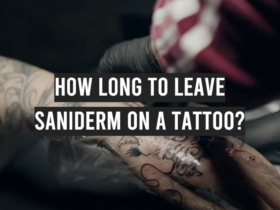
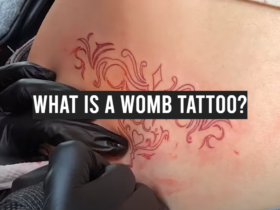

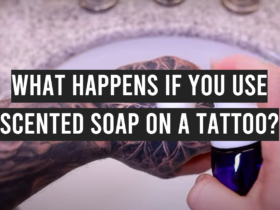
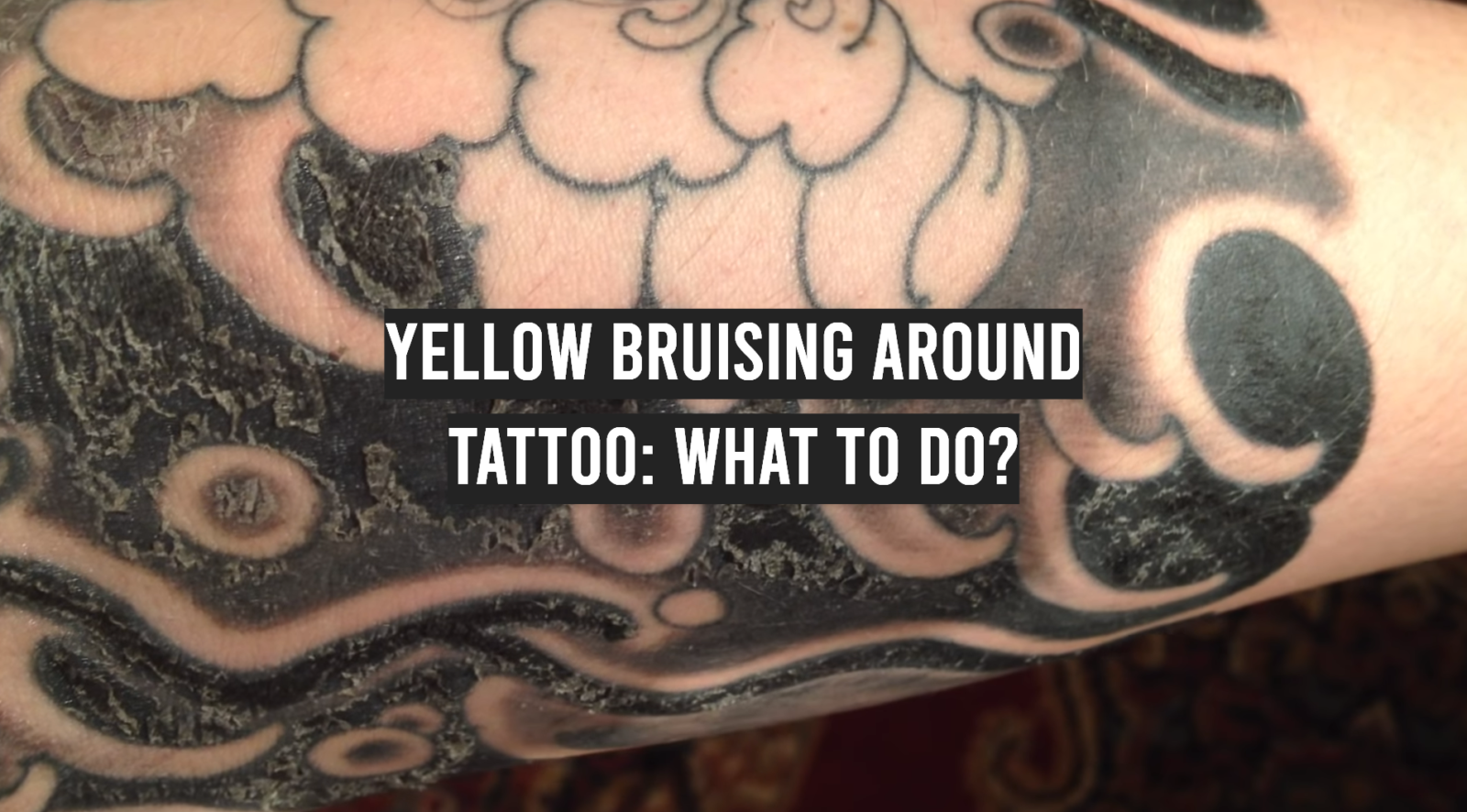
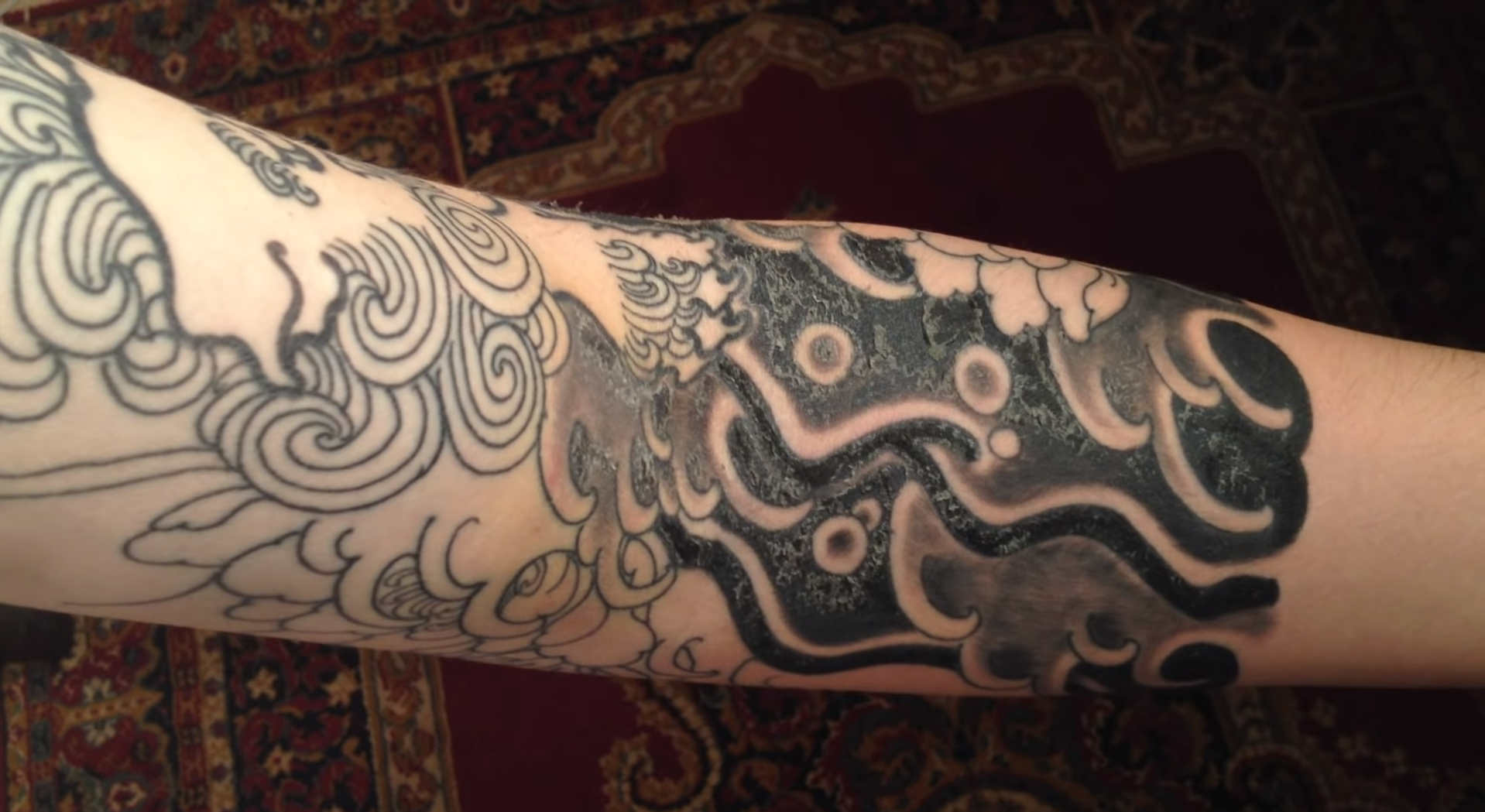
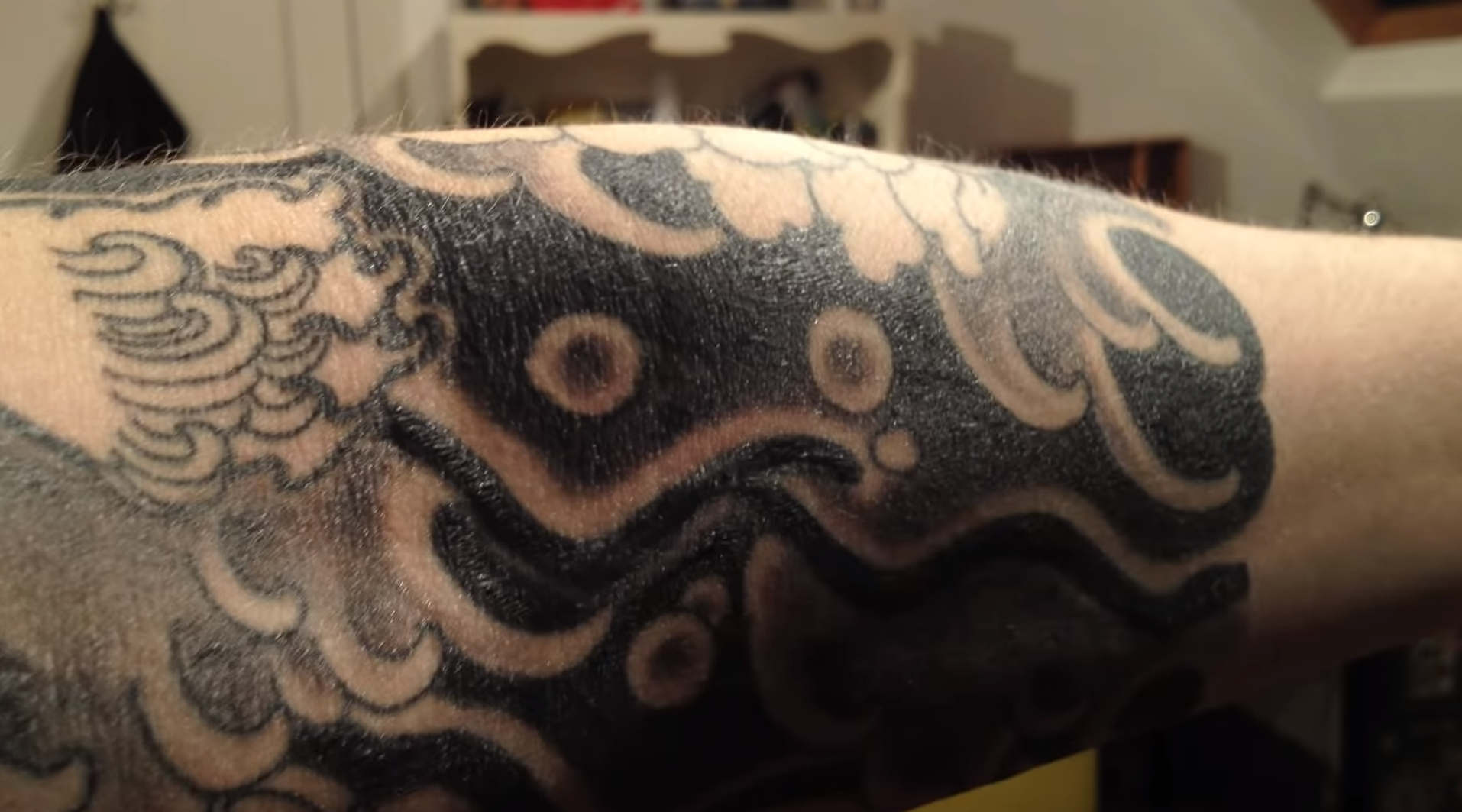
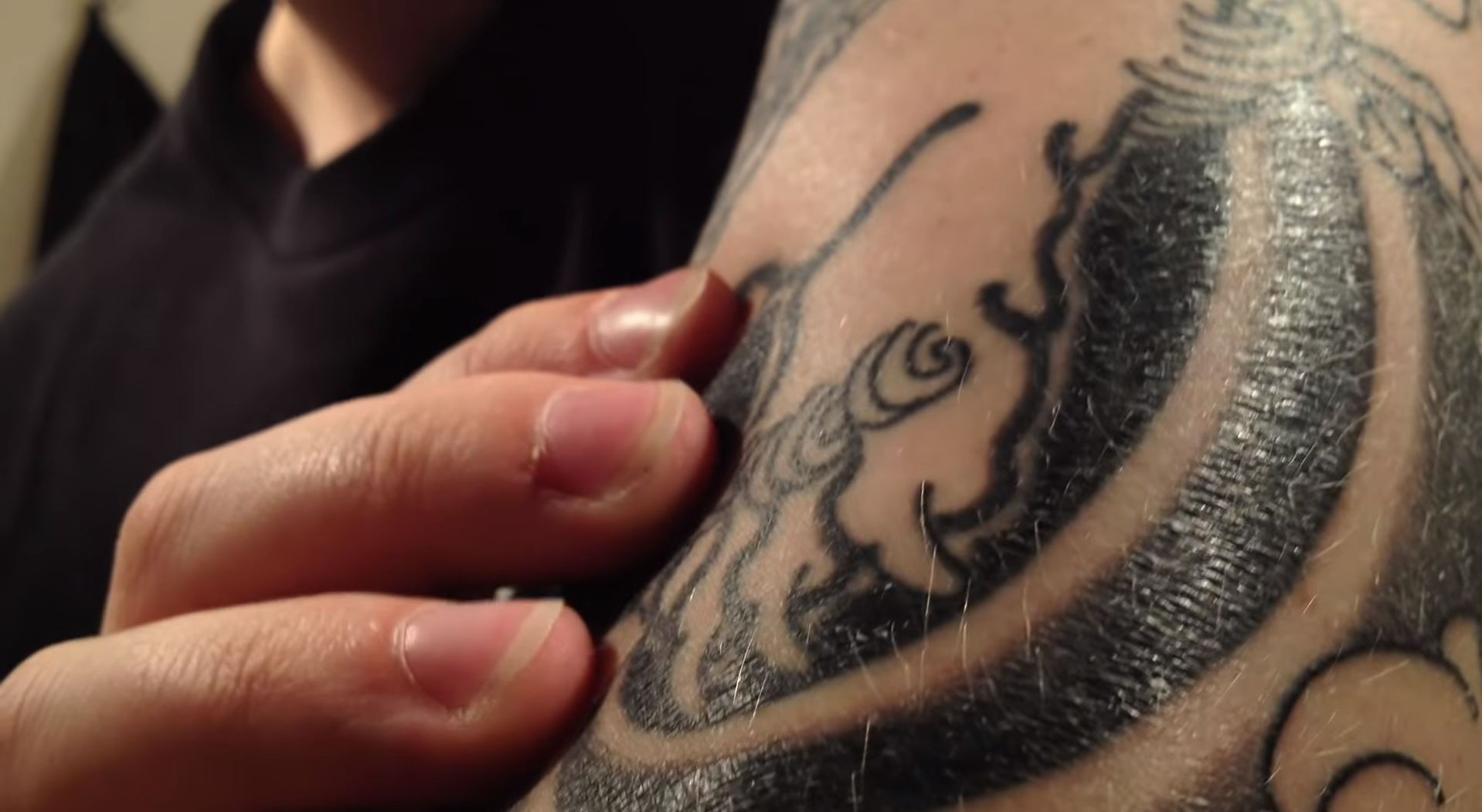
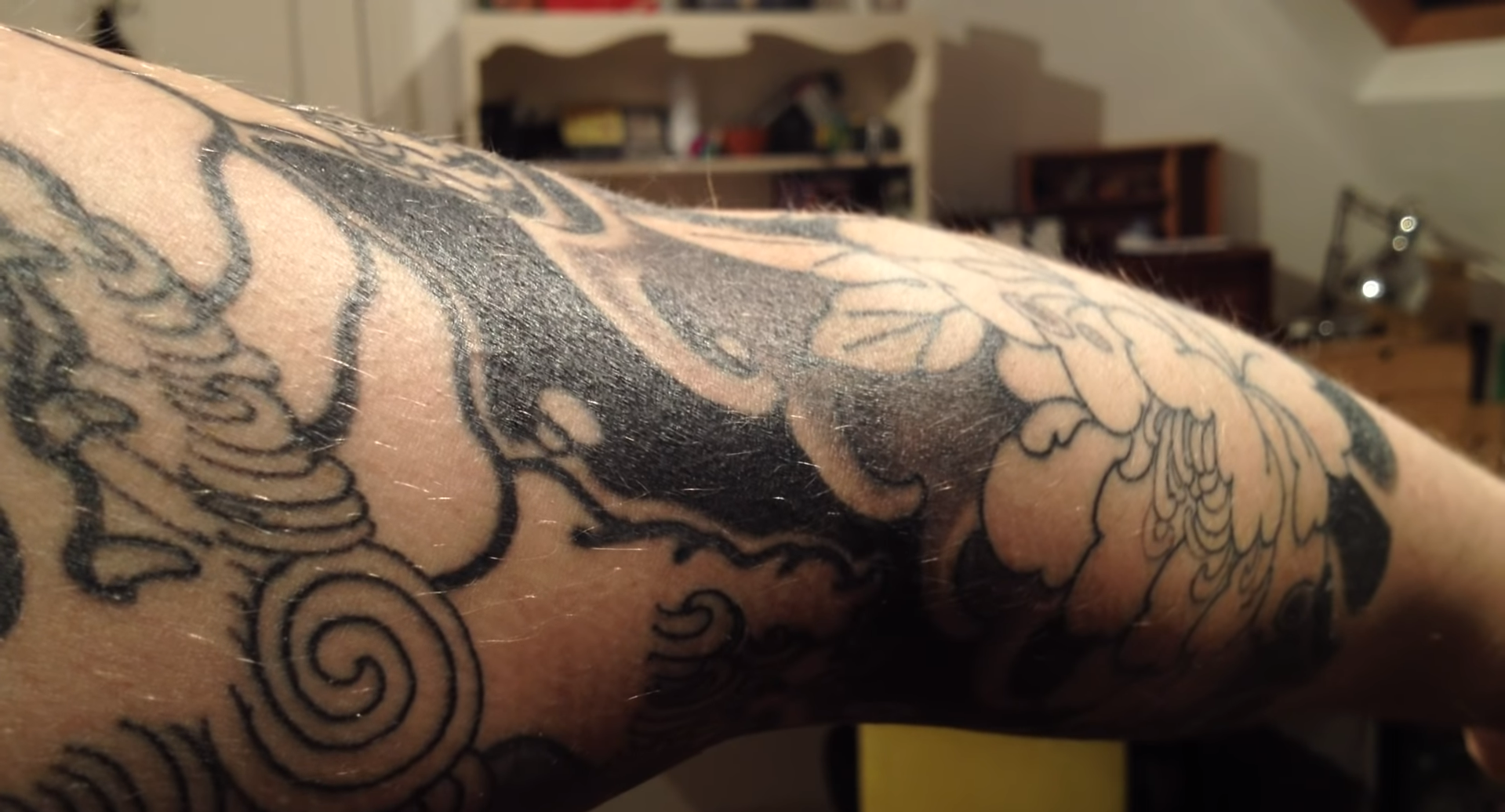
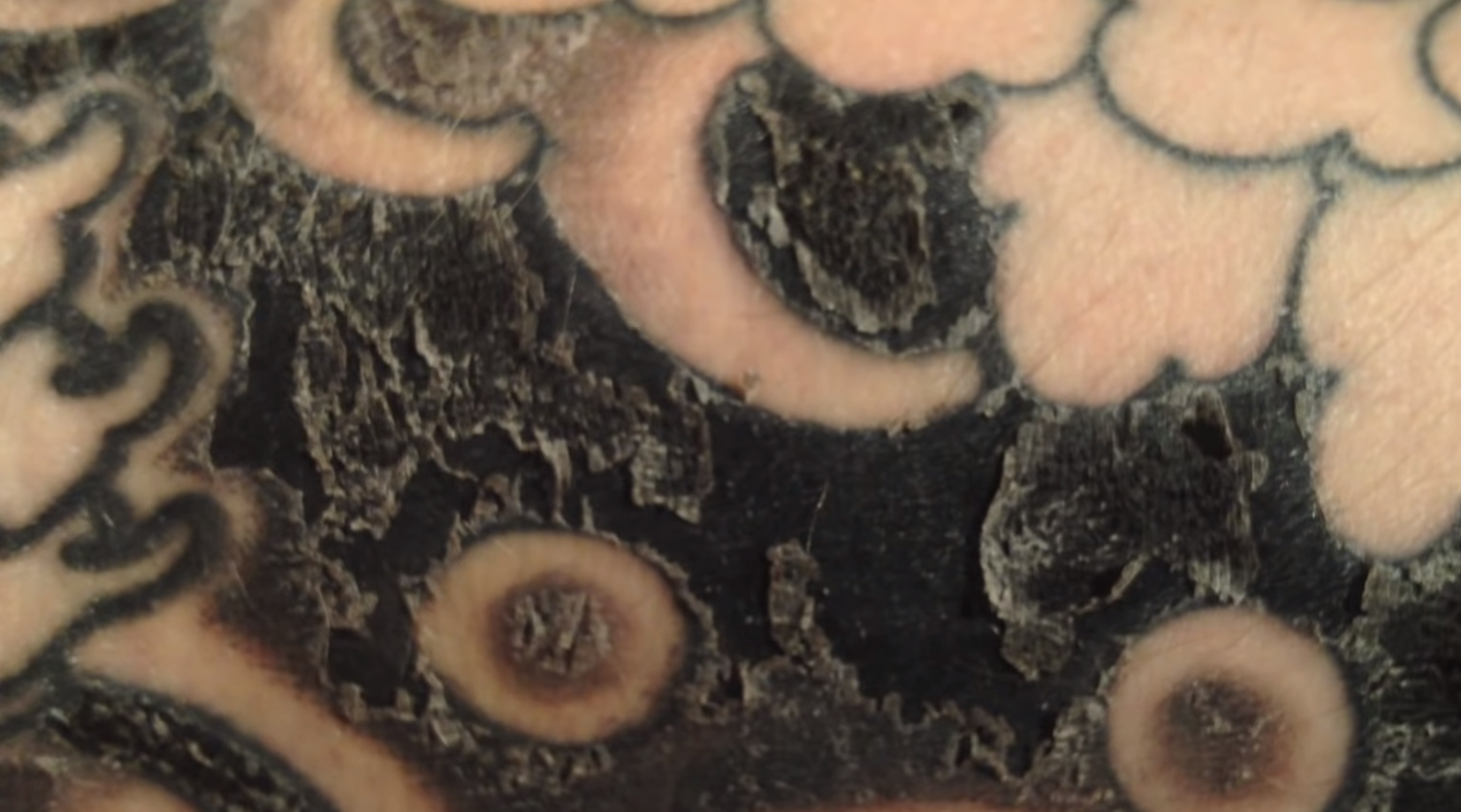
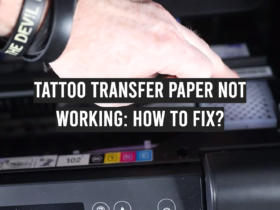
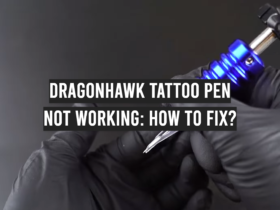
Leave a Review